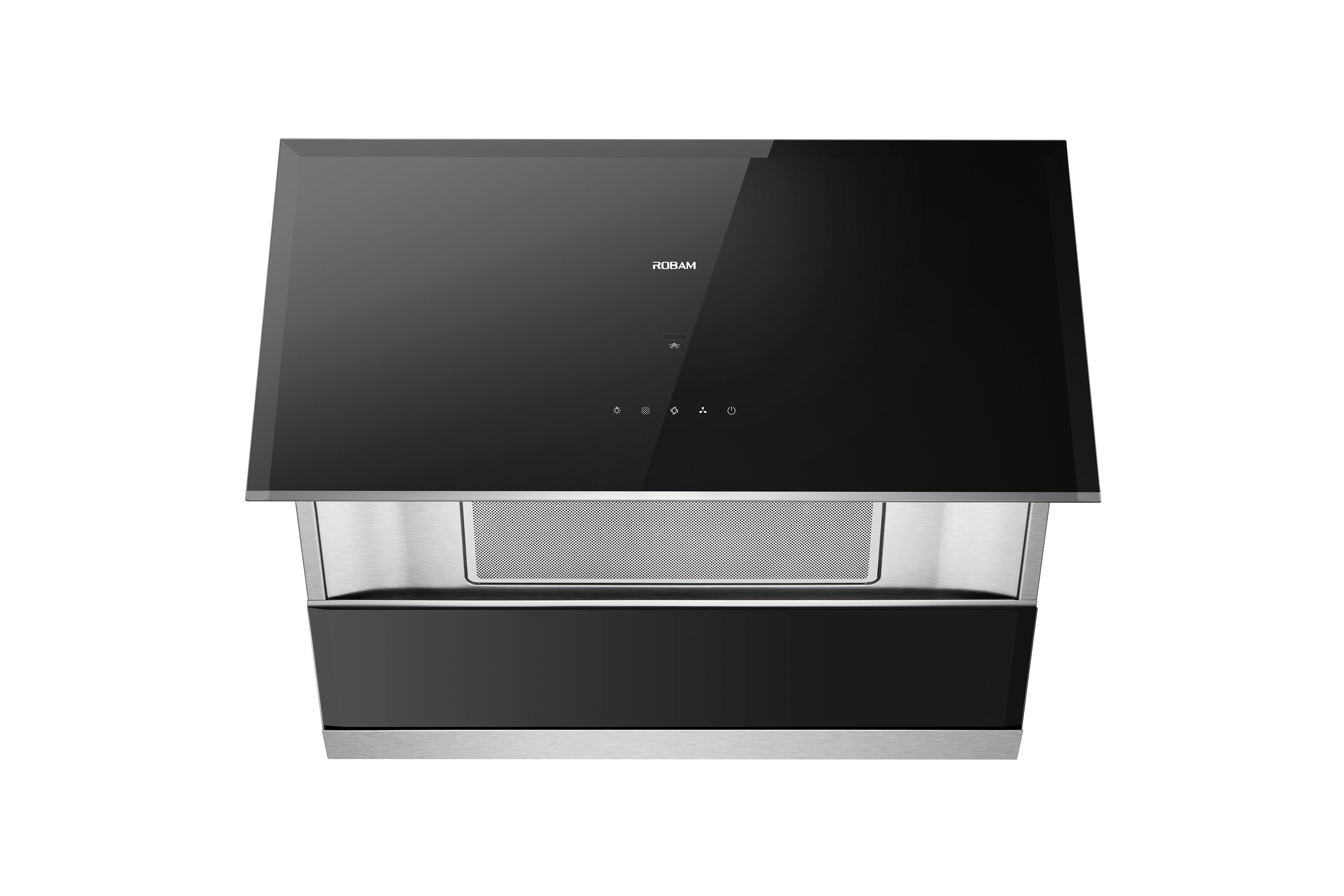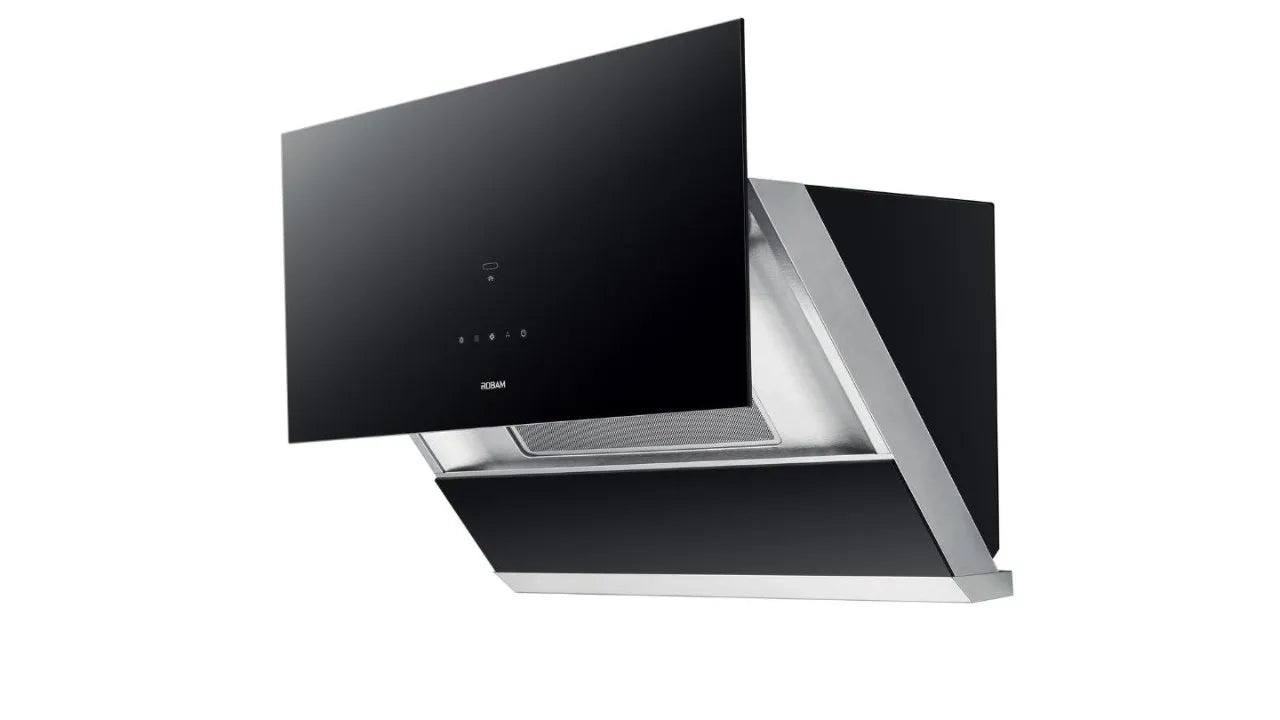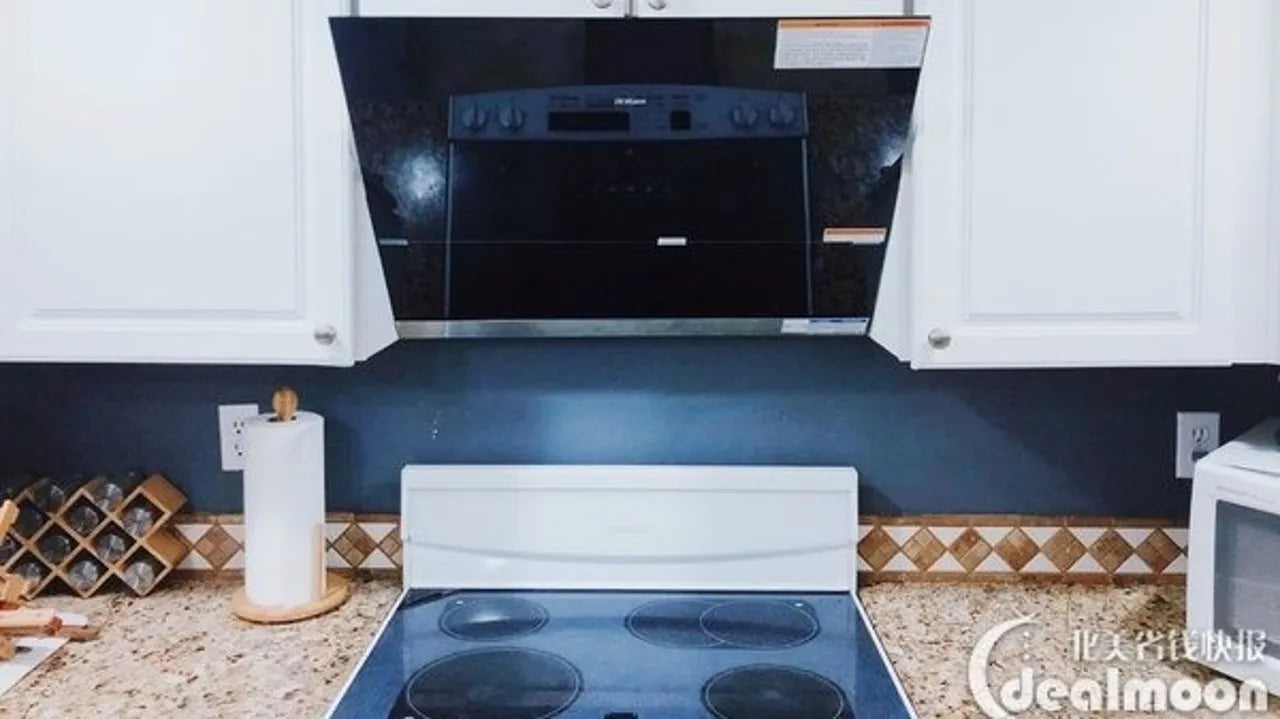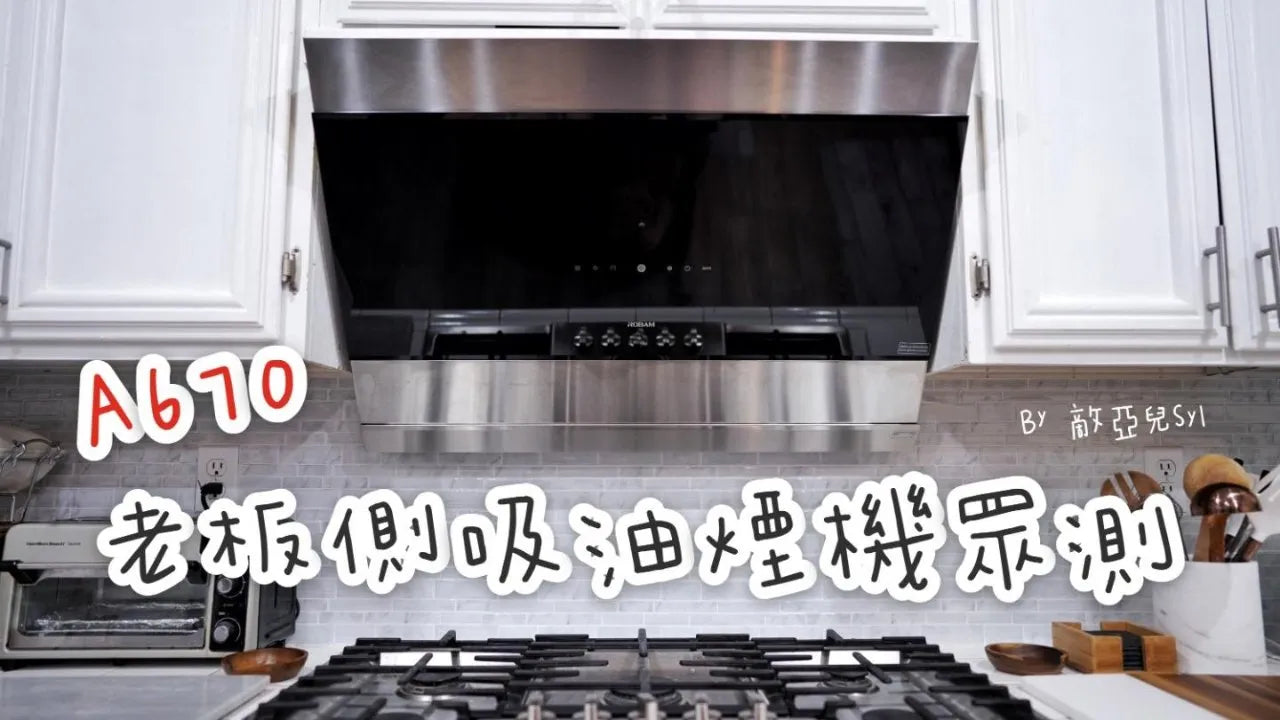A convertible range hood is an appliance designed to remove smoke, steam, grease, cooking fumes and odors from the air in your kitchen, with or without ductwork for ventilation. Using a range hood to collect the grease and smoke from the air means you’ll have less of that oily residue on your walls and ceiling, meaning your kitchen – and the air you breathe – is cleaner, even if it is not possible to ventilate your range hood fan to the outside.
Range hoods come in various styles:
- A wall-mount range hood is installed on the wall directly above the stove.
- An under-cabinet range hood fits underneath an over-stove cabinet.
- A ceiling-mounted or island range hood attaches to the ceiling so it can be placed over an island stove set away from a wall.
Range hoods can be vented, non-vented or convertible. Convertible range hoods can be used for either or both setups, meaning they’re flexible, adaptable and ultra-practical.
How Range Hood Ventilation Works
Ventilated
A ventilated range hood uses a fan to pull the steam, smoke, heat, grease and cooking fumes from your kitchen. It then expels them outdoors via a duct or vent. If you require a professional level range hood with a high CFM, you’ll need a ducted or ventilated range hood system. It has a metallic grease filter, usually stainless steel or aluminum mesh. The mesh filter collects grease and smoke particles so they are not released out through the vent. These are very easily cleaned.
Non-ventilated
A non-ventilated range hood uses a fan but has no duct to the outdoors. Rather, it uses filters to clean the air and recycle it back into your kitchen. The filter is the most important part of a non-ventilated system, and there are several types available:
- Fabric Grease Filter – these absorb grease and odors. They need to be replaced when very dirty as they can’t be cleaned.
- Charcoal – best for neutralizing odors and smoke fumes. Charcoal carbon filters can’t be cleaned and should be replaced approximately every 3 – 4 months. They are most commonly used in recirculated venting systems.
Convertible
A convertible range hood can use either ducted or ductless venting systems. It has a powerful fan that can be attached to a duct and ventilated on the outside and both a metal mesh and a charcoal filter through which the air is circulated to remove odors and particulates for recirculation. You can install convertible range hoods to either recirculate or vent through ductwork, depending on your kitchen setup.
There are pros and cons to each venting system. Choosing a convertible range hood allows for more flexibility in placement.
What Type of Range Hood Should I Buy?
Kitchen Layout & Architecture
Your kitchen layout helps determine the kind of range hood you need. Your range may be on an interior or exterior wall, with or without ductwork leading outside. If you have a multi-storied home and your range is on an interior wall, a ducted range hood may not be possible. In a very old home, ductwork renovations may be too big an expense.
You may have cabinetry or an architectural feature over your cooktop, requiring a low-profile or hidden range hood. Or your range might be located on an island, where your range hood needs to come down from the ceiling.
Before you shop for a range hood, make sure you understand how placement and architectural features influence your decision.
Need help to decide which is the best range hood for you? Check out ROBAM models for award-winning design range hoods loved by customers all over the world. Our top-of-the-line appliances are available through retailers near you!
Ventilated Hoods
PROS
A ventilated range hood removes the unwanted particles from the area altogether. They use a fan and duct to remove the smoke, steam, excess heat, humidity and odors, leaving your cooking area fresh and clean. Ventilated kitchen hoods have powerful and efficient high-speed fans. They tend to be quieter than non-ventilated systems.
CONS
Ventilation ducts can be expensive to install, especially in older homes. They must be positioned in a place where pipes can connect the duct to the exterior of the building, so if you live in a multi-storey home and your stove is on an interior wall, a ducted system may be impossible to fit. Ideally ventilated range hoods are placed on exterior walls
Non-Ventilated Range Hoods
PROS
Non-ventilated range hoods are ductless. This means they can be placed anywhere in your kitchen and don’t require access to the outdoors. They’re generally less expensive and are easier to fit. They require less energy as the exhaust fan doesn’t need to work as hard. Baffle filters can often go in the dishwasher for hassle-free, easy cleaning.
CONS
Less effective than ventilated hood systems. Non-ventilated range hoods recycle the air back into your kitchen, so they don’t remove heat or humidity from the cooking area. Filters need to be cleaned or replaced regularly. If your Ductless range hood is to be used over an island-based stove, you’ll need it to be attached to the ceiling. If the ceiling is very high you might need to purchase an extension to bring it down to an optimum efficiency level. Non-ventilated range hoods are generally louder than ventilated systems.
Convertible Range Hoods (future home improvements/ductwork)
PROS
A convertible range hood comes with even more flexibility of placement. If you plan on moving your cooking area about in the future, you can easily change the range hood to suit your new placement, whether that will be ducted or not.
CONS
Can be more expensive to purchase.
If setting up your range hood as a ductless system, you’ll need a filter. Most use charcoal and these need to be replaced regularly.
Important Range Hood Features
Easy cleaning
Range hood filters are easy to change or clean. Metallic baffle filters can go in the dishwasher to make it really hassle-free. Even if you’ve chosen not to have a dishwasher, they can be soaked in a cleaning solution and easily reinstalled once dry.
Size
The range hood must cover the entire area of the stovetop to capture all emissions from the burners, so measuring the size of your range before you start shopping is essential.
Noise factor
Range hood noise is measured in “sones” or decibels (dB). Decibels are a unit of loudness. The higher the sone output, the louder your range hood will be. The lowest setting on your range hood will be the lowest running sone level. Range hood sone levels are measured while running at maximum hood fan speed. The higher your settings, the louder your sone output will be. Some people choose a more powerful hood to run at a lower setting, to keep the noise level down. With integral noise reduction acoustic panels, the ROBAM range means you don’t need to shout to be heard while running the range hood fan.
Power (Cubic feet per minute – CFM)
The power of a range hood is measured in CFMs or Cubic Feet per Minute. To know what power level you need, you’ll need to know what type of stove you’ll be using it over. The size and power output of the stove also need to be taken into account.
For a Gas stove: You need 100 CFM for every 10,000 BTU your gas stove generates.
For an Electric stove: You need 100 CFM for every 10″ of stove width.
If you’re using your range hood outdoors you’ll have slightly different specifications and will likely need a more powerful range hood with a higher CFM.
Lights
Your range hood comes with lighting to illuminate your stovetop as needed. Lighting options vary between appliances. Energy-efficient, long-life LED or halogen bulbs and easy controls mean the lights in your range hood can be set with your personal preferences in mind.
Functions and controls
Easy-clean, touch screen panels make operation simple. Some models have up to 9-speed settings, so you can easily set your range hood to just the right level every time you cook.
Conclusion
The range hood you choose should fit your space, architecture, and your aesthetic. After those considerations, look at the features and performance. ROBAM manufactures award-winning range hoods chosen by 50 million customers all over the world for powerful, quiet operation, advanced technology, and contemporary design.


















